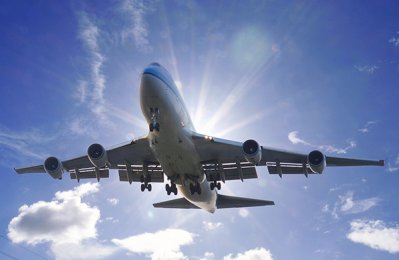ME airlines’ freight volumes down 8pc in September
Middle Eastern airlines’ freight volumes decreased 8 per cent in September 2019, compared to the same period last year, according to figures released by the International Air Transport Association (Iata).
More Stories
Middle Eastern airlines’ freight volumes decreased 8 per cent in September 2019, compared to the same period last year, according to figures released by the International Air Transport Association (Iata).
Middle Eastern airlines’ figures saw the sharpest drop in freight demand of any region. Capacity decreased by 0.4 per cent, added the report.
Escalating trade tensions and the slowing in global trade have affected the Middle East region’s performance due to its strategic position as a global supply chain link. Most key routes to and from the region have seen weak demand in the past few months.
The large Europe to Middle East and Asia to Middle East routes were down 8 per cent and 5 per cent respectively in August compared to a year ago, it said.
Iata released data for global air freight markets showing that demand, measured in freight tonne kilometers (FTKs), decreased by 4.5 per cent in September 2019, compared to the same period in 2018.
This marks the eleventh consecutive month of year-on-year decline in freight volumes, the longest period since the global financial crisis in 2008.
Freight capacity, measured in available freight tonne kilometers (AFTKs), rose by 2.1 per cent year-on-year in September 2019. Capacity growth has now outstripped demand growth for the 17th consecutive month.
Air cargo continues to suffer from: the intensifying trade war between the US and China, and South Korea and Japan; the deterioration in global trade; and weakness in some of the key economic drivers.
Global export orders continue to fall. The Purchasing Managers Index (PMI) tracking new manufacturing export orders has pointed to falling orders since September 2018.
Alexandre de Juniac, IATA's director general and CEO, said: “The US-China trade war continues to take its toll on the air cargo industry.”
“October’s pause on tariff hikes between Washington and Beijing is good news. But trillions of dollars of trade is already affected, which helped fuel September’s 4.5 per cent year-on-year fall in demand. And we can expect the tough business environment for air cargo to continue,” he added.
Airlines in Asia-Pacific, Europe, North America and the Middle East suffered sharp declines in year-on-year growth in total air freight volumes in September 2019, while Latin America carriers experienced a more moderate decline. Africa was the only region to record growth in air freight demand compared to September last year.
• Asia-Pacific airlines saw demand for air freight contract by 4.9 per cent in September 2019, compared to the same period in 2018. The US-China and South Korea-Japan trade wars along with the slowdown in the Chinese economy have significantly impacted this region. More recently, the disruption to operations at Hong Kong International Airport – the largest cargo hub in the world – added additional pressure. With the region accounting for more than 35 per cent of total FTKs, this performance is the major contributor to the weak industry-wide outcome. Air freight capacity increased by 2.7 per cent over the past year.
• North American airlines saw demand decrease by 4.2 per cent in September 2019, compared to the same period a year earlier. Capacity increased by 1.9 per cent. The US-China trade war and falling business confidence continue to weigh on the region’s carriers. Freight demand has contracted between North America and Europe and between Asia and North America.
• European airlines posted a 3.3 per cent decrease in freight demand in September 2019 compared to the same period a year earlier. Weaker manufacturing conditions for exporters in Germany, softer regional economies, and ongoing uncertainty over Brexit, have impacted the recent performance. Capacity increased by 3.3 per cent year-on-year.
• Latin American airlines experienced a decrease in freight demand in September 2019 of 0.2 per cent compared to the same period last year and a capacity decrease of 2.9 per cent. Despite indications of a recovery in the Brazilian economy, deteriorating conditions elsewhere in the region along with a slowing in global trade have impacted the region’s performance.
•African carriers posted the fastest growth of any region in September 2019, with an increase in demand of 2.2 per cent compared to the same period a year earlier. This was a significant slowdown in growth from the 8 per cent recorded in August. Strong trade and investment linkages with Asia and robust economic performance in some key regional economies contributed to the positive performance. Capacity grew 9.4 per cent year-on-year. – TradeArabia News Service
Projects
















